Quantum Measurement
Concept Map
Quantum Measurement is a pivotal concept in quantum mechanics, characterized by phenomena such as wavefunction collapse and the probabilistic nature of outcomes. Key historical developments include Schrödinger's wave equation and Heisenberg's Uncertainty Principle. The text also explores practical applications in quantum computing and cryptography, as well as advancements in measurement techniques that continue to shape the field.
Summary
Outline
Understanding Quantum Measurement
Quantum Measurement is a fundamental aspect of quantum mechanics that differs markedly from classical measurement. It involves observing quantum systems, which can exhibit properties like superposition—where particles can be in multiple states at once—and entanglement, where particles are interconnected regardless of distance. Measurement in quantum mechanics is unique because it can change the state of the system, a phenomenon known as wavefunction collapse, where the quantum system's potential states reduce to one definite state. The probabilistic nature of quantum outcomes, where the likelihood of an event is calculated using the Born rule, is a key principle, indicating that the square of the wavefunction's amplitude gives the probability of finding the system in a particular state.Key Historical Developments in Quantum Measurement
The evolution of Quantum Measurement is marked by several key discoveries. In 1926, Erwin Schrödinger formulated his wave equation, providing a mathematical framework for the evolution of quantum states over time. Werner Heisenberg introduced the Uncertainty Principle in 1927, revealing the fundamental limits in measuring pairs of properties like position and momentum simultaneously. The Einstein-Podolsky-Rosen (EPR) Paradox, proposed in 1935, challenged the completeness of quantum mechanics by pointing out the peculiarities of entanglement. John Bell's Theorem in 1964 further explored these concepts, providing evidence for quantum mechanics' predictions and clarifying aspects of the EPR paradox. These milestones have profoundly influenced our understanding of quantum measurement and spurred ongoing research in the field.The Dilemma of Quantum Measurement
The quantum measurement problem is a fundamental issue in quantum mechanics, highlighting the discrepancy between the deterministic evolution of quantum systems, as described by the Schrödinger equation, and the stochastic nature of measurement outcomes. This conundrum poses deep philosophical questions about reality and determinism, as it suggests that quantum systems exist in a superposition of states until they are observed, at which point they abruptly collapse to a single state. The randomness of this collapse, which appears to occur without any external cause, presents a challenge to classical notions of causality and remains a subject of intense debate and investigation in the field of quantum physics.Direct Observation of Quantum Wavefunctions
Direct measurement of quantum wavefunctions is an advanced technique that has been realized in recent scientific research. The wavefunction, which encapsulates the probabilities of a quantum system's possible states, is typically inferred through a combination of weak measurements, which slightly perturb the system without causing collapse, and subsequent strong measurements that lead to the wavefunction's collapse. This approach was exemplified by experiments conducted by Lundeen and Bamber in 2011, which involved weak and strong measurements to reconstruct the wavefunction of a photon, providing a direct glimpse into the quantum realm.Quantum Measurement Basics for Novices
Quantum measurement is the process by which information about the state of a quantum system is acquired. It differs from classical measurement in that quantum systems can be in a superposition of states, and the act of measurement causes the system to collapse to a single state. This collapse is inherently probabilistic, with the likelihood of a particular outcome determined by the system's wavefunction. Quantum measurement theory addresses these unique phenomena, focusing on concepts such as observables, eigenstates, and the probabilistic nature of quantum outcomes. Practical quantum measurements require intricate laboratory techniques and are essential for emerging technologies like quantum computing and cryptography.Practical Applications of Quantum Measurement
Quantum measurement has significant practical applications, particularly in the realms of quantum computing, quantum information processing, and quantum cryptography. In quantum computing, measurements are essential for reading out the results from qubits, which operate in superpositions of states. Quantum information processing utilizes quantum measurement to control and interpret quantum data, while quantum cryptography employs it to achieve secure communication by detecting any eavesdropping. The ongoing study and application of quantum measurement principles are driving technological innovation, offering new capabilities in computing, secure communication, and beyond.Advancements in Quantum Measurement Techniques
The techniques used in quantum measurement have evolved considerably since the inception of quantum mechanics. Initially, the focus was on projective measurements, which could disturb the quantum system significantly. The field has since expanded to include weak measurements, which only slightly perturb the system, and continuous measurements, which monitor the system over time. These methods are employed using sophisticated apparatus and are crucial for experiments like the Quantum Eraser, which reveal the counterintuitive nature of quantum measurements. As our comprehension of quantum phenomena grows, these techniques are continually refined, improving our ability to explore and utilize quantum systems for advanced technological applications.Show More
Fundamentals of Quantum Measurement
Properties of Quantum Systems
Quantum systems exhibit properties like superposition and entanglement
Wavefunction Collapse
Measurement in quantum mechanics can change the state of the system, known as wavefunction collapse
Probabilistic Nature of Quantum Outcomes
The likelihood of an event in quantum mechanics is calculated using the Born rule, indicating that the square of the wavefunction's amplitude gives the probability of finding the system in a particular state
Evolution of Quantum Measurement
Key Discoveries
The evolution of quantum measurement is marked by key discoveries such as Schrödinger's wave equation, Heisenberg's Uncertainty Principle, and Bell's Theorem
Milestones
These milestones have profoundly influenced our understanding of quantum measurement and spurred ongoing research in the field
Ongoing Research
Ongoing research in the field of quantum physics continues to explore and expand upon these concepts
Quantum Measurement Problem
Discrepancy between Deterministic Evolution and Stochastic Nature
The quantum measurement problem highlights the discrepancy between the deterministic evolution of quantum systems and the stochastic nature of measurement outcomes
Philosophical Implications
This conundrum poses deep philosophical questions about reality and determinism, challenging classical notions of causality
Ongoing Debate and Investigation
The randomness of wavefunction collapse remains a subject of intense debate and investigation in the field of quantum physics
Practical Applications of Quantum Measurement
Quantum Computing
Quantum measurement is essential for reading out results from qubits in quantum computing
Quantum Information Processing
Quantum measurement is used to control and interpret quantum data in quantum information processing
Quantum Cryptography
Quantum measurement is employed in quantum cryptography to achieve secure communication by detecting eavesdropping





